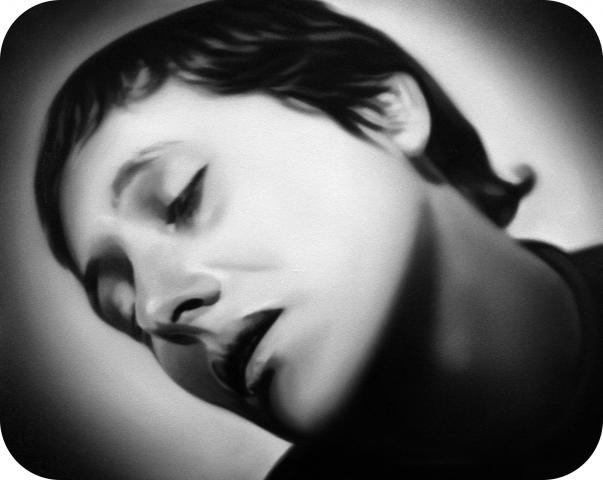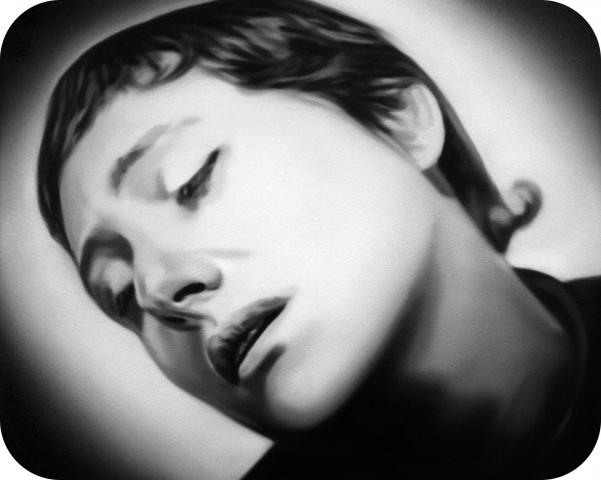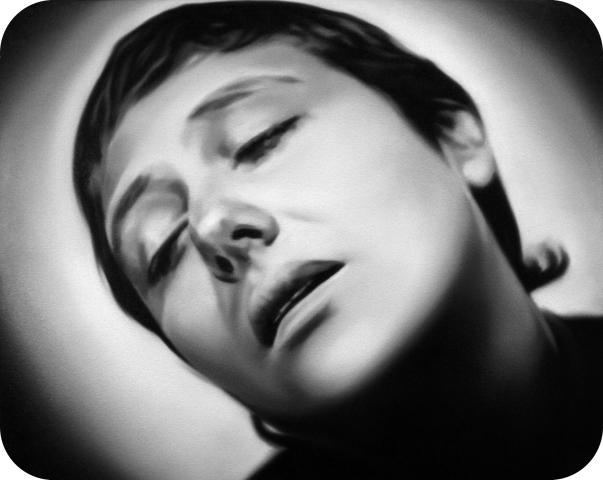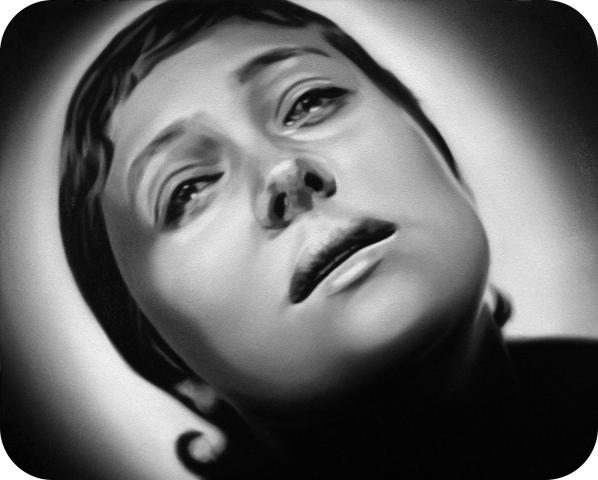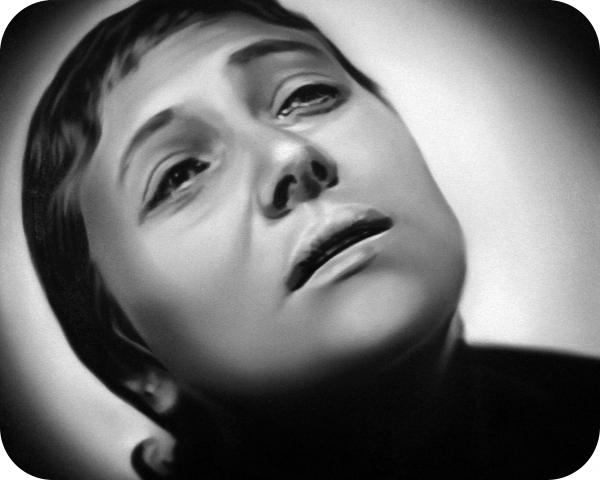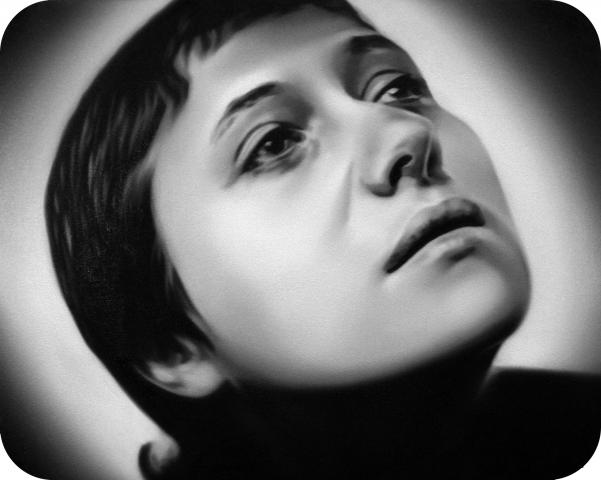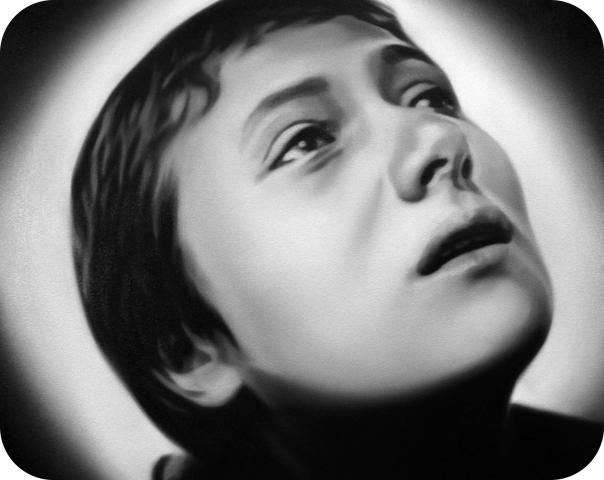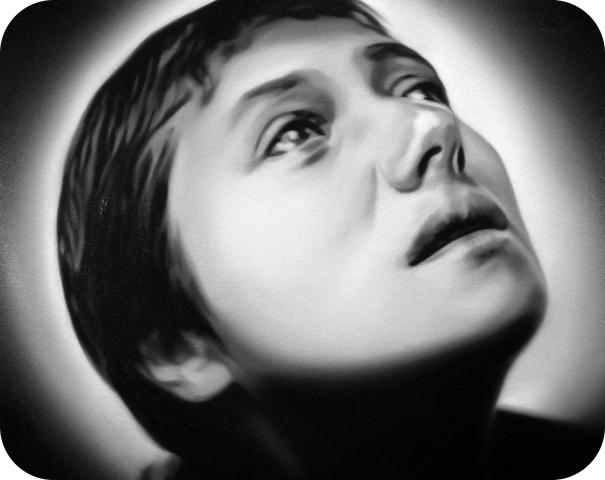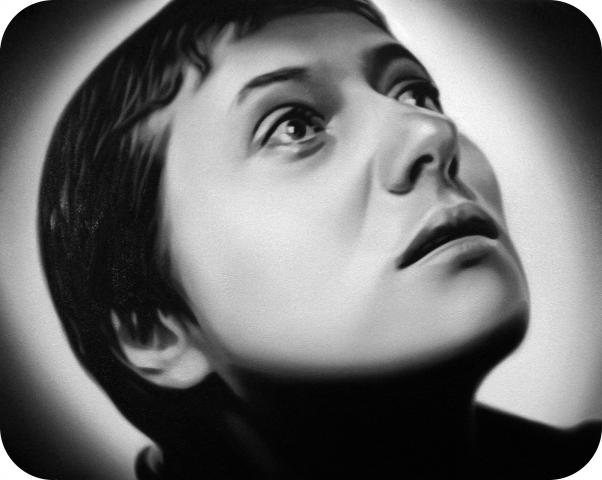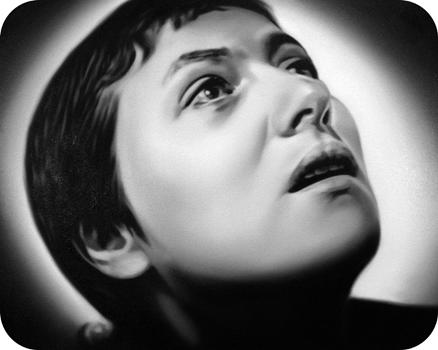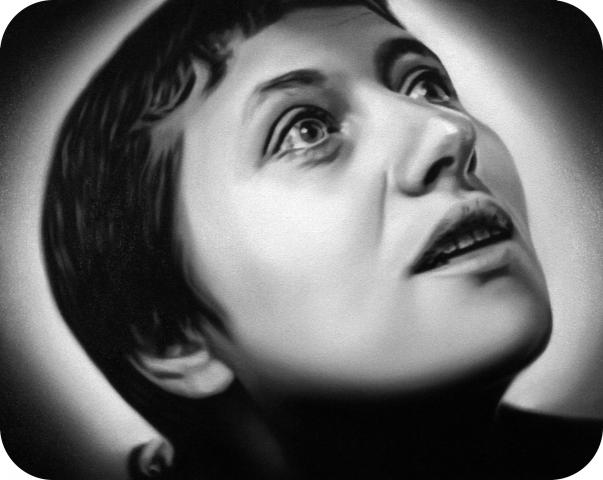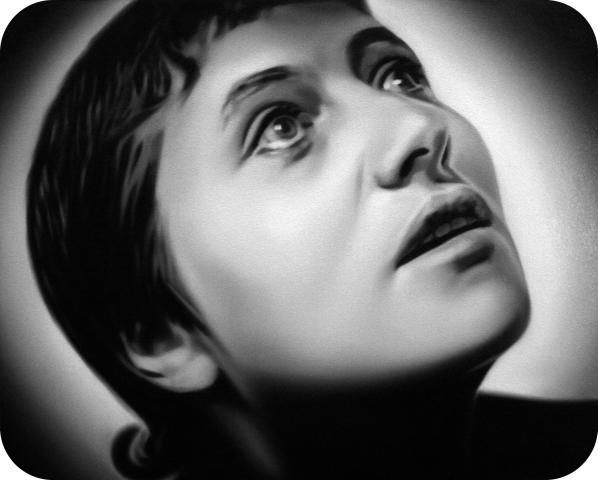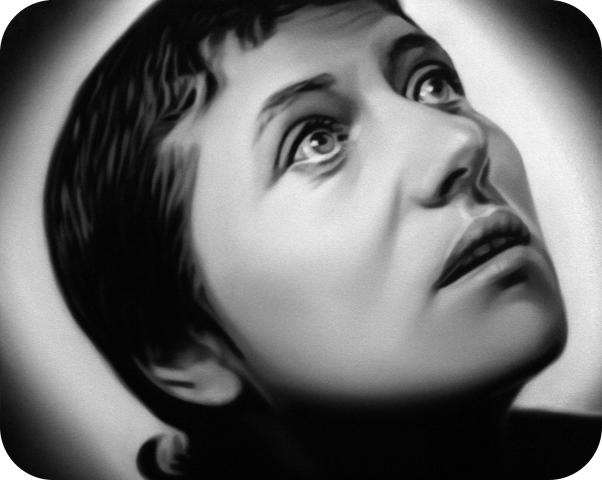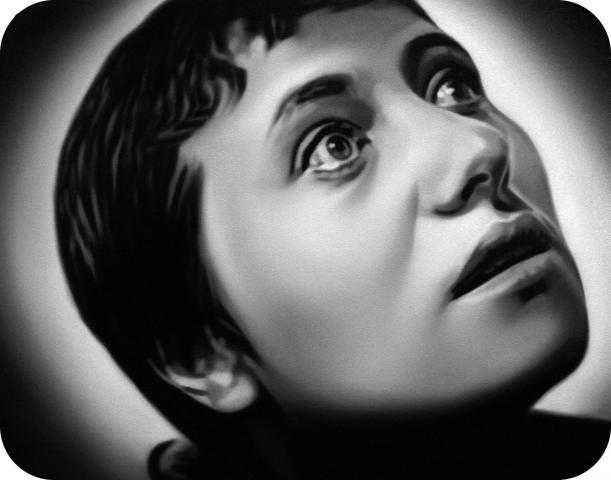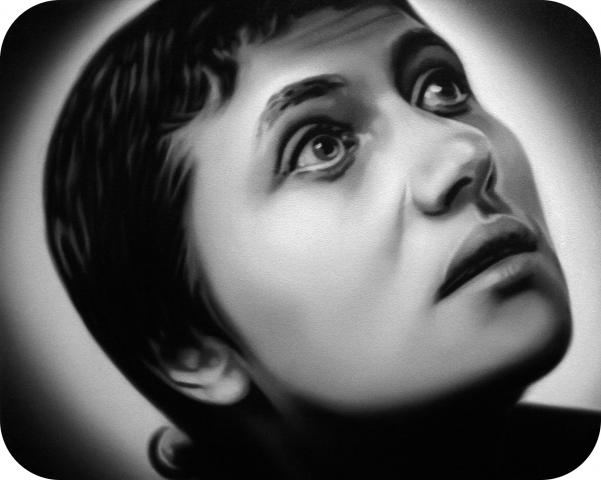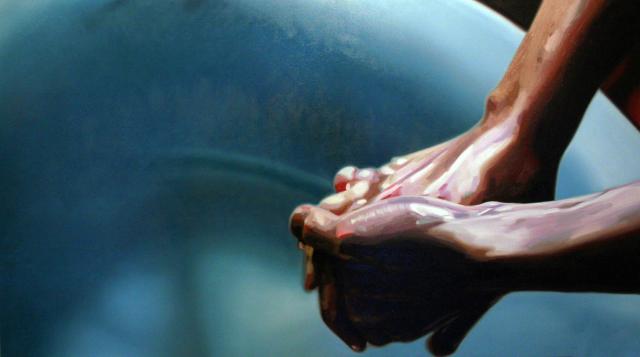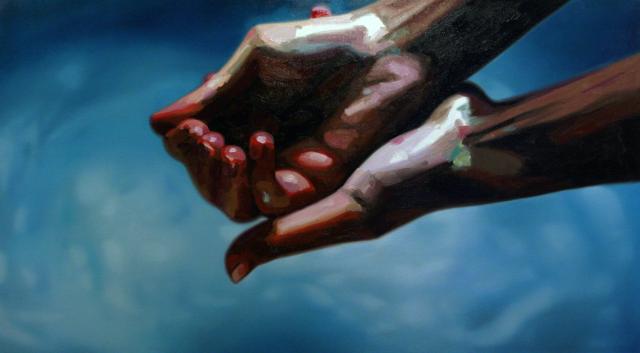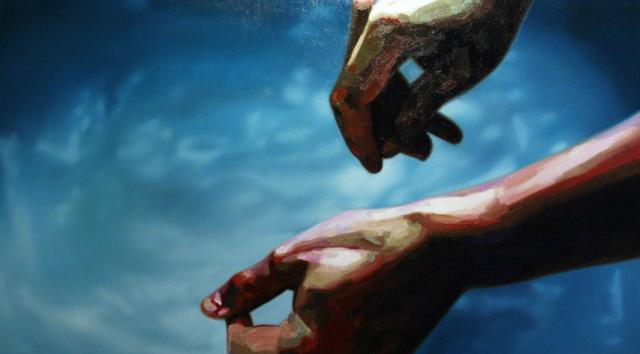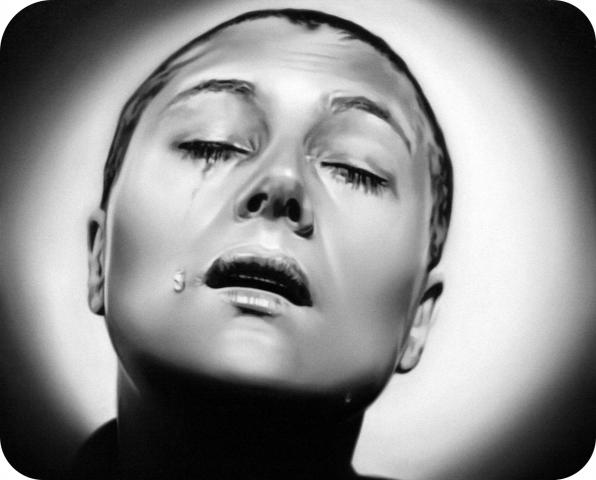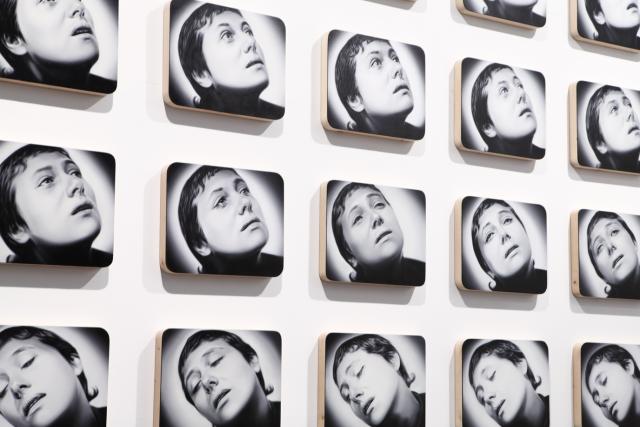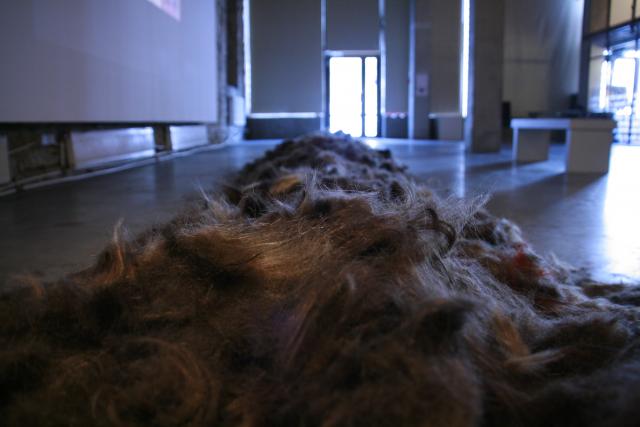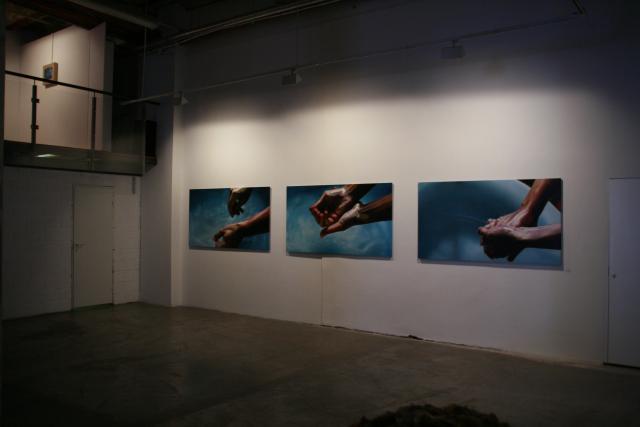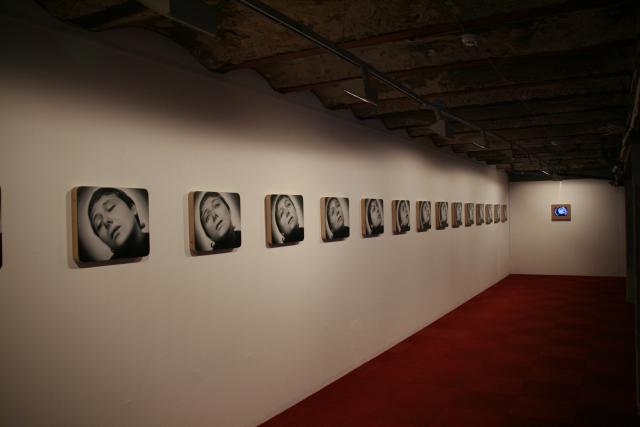MAARIT MURKA "HAIRPOWER"
Press release
With this exhibition Murka deals with the motive of cutting hair and with the cultural codes and meanings connected to it. More widely it touches the limits of intimacy of human body and the possible humiliation that may come with the crossing of these borders and also the myths and taboos that surround it in human culture. Hair as a part of bodies border area is connected to the “me” of a person, his/her self-esteem and a thin line between them and the world, several magical beliefs, taboos and cultural rituals live on that border.
Murka looks more closely at a few motives directly connected to cutting hair. On the balcony of Vaal there are stills painted from the cultic silent movie "The Passion of Joan of Arc" (1928), where in one scene the hair of the heroine is cut off before taking to execution. The cutting of the hair is an act through which the victim violently loses her personality, is a humiliation motive that can be found in several cultures, and is in use even today for example in the military, where the ritual meaning of this practice comes persistently and secretly along behind the pragmatic reasons. In mythological meaning the forced cutting off the hair can be considered as taking away the victims vitality.
The other motive of hair used in the exhibition comes from the personal experience of the artist herself and indicates the intimacy of the act, and also the victim’s vulnerability and insecurity. The viewer sees videos of how the artist cuts the hair of her mother and father. Here the cutting of the hair is like a communication between people, a bodily ritual, where two sides take a part where the trust and closeness between them becomes important. The habit of letting a family member cut ones hair has been in the artist’s family for many generations. Here the question is not about superstition, but just a failure to let a stranger touch ones hair. Murka says that the emotional atmosphere that comes with this ritual is a good indicator for the entire relationship and gives the possibility to work through the relations. The artist finds that the ritual of taking care of ones body that belongs to the private sphere of a person has today been turned into a part of the beauty industry and shows no interest towards close relationships.
The third screen window that belongs to the same video projection and the paintings and installations added to it, shows what a strange objective meaning potential hair has: hair is a important and unavoidable signal of sexuality and attraction, part of identity and the securer of the “me” of a person and will bleed empty of that meaning as soon as it is separated from the body. They will become just garbage, but cut off hair can also be repulsive and make ground for black magic.
Maarit Murka is a painter who since 2003 has been to exhibitions with photorealistic paintings, where also videos and installations that take up the gallery space have been included. As an artist Murka has been interested in subjective personal stories, her themes for exhibitions are often come from a personal events or a thought that has been on her mind for some time. Often her way of approaching the subject is to physically put herself to a situation and then depict it on a painting or picture herself in a more or less realistic situation. Although her subjects make the critics often quite puzzled, it seems that the reason for her success is the creating of mainly strong visuals that make you watch them more than once.
Press release compiled by Ellu Maar
Fear and power of hair
By Ragne Nukk, journalist
In gallery Vaal is open the exhibition „Hairpower“ by Maarit Murka. The exhibition looks through paintings, installations and videos on the multi-level operation of hair as a mythologized object in human culture.
Hair and body hair in general are the carriers of strong symbolic meanings and connotations in all the cultures of the world. Whether they are long, thick, short, think – hair and their lack of and getting old is a ever relevant subject. The mythology of hair is mainly connected to women, although men have been left out of it unfairly.
Hair has the same emotional charge for men and women. As for women long and thick hair has always been an indication of good health and fertility. During the WW I short hair became a symbol of women’s emancipation.
Cutting hair, changing hairstyles is one of the easiest ways for considerably changing ones looks without painful surgery.
One might even say that hair is the only part of humans body that she can radically change by herself without any considerable pain. There are women who when going through great changes in life start with a new page by first visiting the hair saloon.
Intimate level
Hair carries the soul of the human. Let us remember many fairytales, where a flock of hair is an offering or is given to a loved one. In magic hair has direct connections with its owner.
The intimate, personal side of hair is illustrated by the Maarit Murka video, where she cuts the hair of her mother and father. Allegedly cutting hair in her family is a peculiar communication ritual and unfamiliar hairdressers are not allowed to such personal level. It is historically been believed that hair dressers have the power over the mind and body of humans.
Praising of hair ends there where cut off hair begins. Admiring beauty is replaced by horror right when hair is piled up on the floor cut off.
Power of hair
Maarit Murka demonstrates hair-fetish along with cut-off hair horror. In the video the ritual hair cutting of the family ends with rolling around in cut off hair, that sticks to the face and body of the artist. On the floor of the gallery there are piled up hair collected from hair saloons - that is the dead hair.
Hair is the symbol of vitality. Their forced removing has throughout history meant the loosing of social status and power.
Murka’s series of paintings depicts moments from the 1928 movie „The Passion of Joan of Arc", where the hair of the heroine is cut off before execution. This is a motive of humiliations and the violent suppressing of the personality as is explained in the cover letter of the exhibition written by Ellu Maar. Here we can see the difference between forced and voluntary cutting of hair, where the latter is seen as rebirth.
